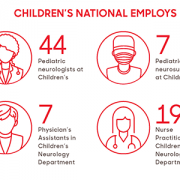Effective treatment for children with hemimegalencephaly

Anatomic or functional hemispherectomy are established neurosurgical treatment options and are recommended for effective seizure control and improved neurodevelopmental outcome in patients with HME.
Endovascular hemispherectomy can be safely used to provide definitive treatment of hemimegalencephaly (HME) related epilepsy in neonates and young infants when intraprocedural events are managed effectively, a new study finds.
The authors of the study, which published in the Journal of NeuroInterventional Surgery, add that this less invasive novel approach should be considered a feasible early alternative to surgical hemispherectomy.
Why it matters
Anatomic or functional hemispherectomy are established neurosurgical treatment options and are recommended for effective seizure control and improved neurodevelopmental outcome in patients with HME. Hemispherectomy in the neonate, however, is associated with high surgical risks and most neurosurgeons defer surgical hemispherectomy until the patient is at least 8 weeks old. This delay comes at a significant neurocognitive cost as the uncontrolled seizures during this time of deferred surgery have a deleterious effect on future neurocognitive outcome.
Why we’re excited
“The procedure we have developed, endovascular hemispherectomy by transarterial embolization, acutely stops seizures and this cessation of seizures has been sustained in each of the treated patients,” says Monica Pearl, M.D., director of the Neurointerventional Radiology Program at Children’s National Hospital and the study’s lead author.
This treatment option – performed early in life – provides hope and a better quality of life for these patients post procedure.
What’s been the hold-up in the field?
Currently, the only effective treatment option is hemispherectomy. With the patient population of neonates and young infants, hemispherectomy has a very high mortality and complication rate resulting in most neurosurgeons deferring treatment until at least 8 weeks. This leaves neonates and young infants without effective treatment options and on multiple antiseizure medications in an effort to control the seizures
How does this work move the field forward?
“Embolization provides a highly effective treatment option that acutely stops seizures during a time period of critical neurodevelopment and one in which traditional open neurosurgical procedures are not viable options,” Dr. Pearl says. “Specifically, we can consider and perform embolization in children as young as one or two weeks of age rather than waiting until at least 8 weeks of age. The impact of earlier intervention – acutely stopping the seizures, reducing the dose and number of antiseizure medications and avoiding more invasive surgical procedures (hemispherectomy, shunt placement) – appears to be dramatic in our recent series. We are conducting long term studies to assess this effect on neurodevelopmental outcome.”
How is Children’s National leading in this space?
Dr. Pearl and the late Taeung Chang, M.D., neurologist at Children’s National, pioneered this concept and treatment pathway. The multidisciplinary team is led by Dr. Pearl, who has performed all the embolization procedures (transarterial embolization/endovascular hemispherectomy) and Tayyba Anwar, M.D., Co-Director, Hemimegalencephaly Program at Children’s National Hospital. Our epilepsy team, neonatology team and neurosurgery team work collaboratively managing the patients before and after each procedure.










